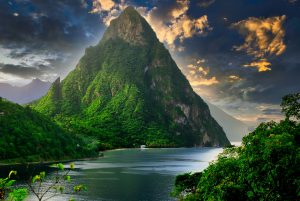
30 World Heritage Sites Of The Caribbean You Need to Visit
Here’s a Complete List of UNESCO Approved and Tentative World Heritage Sites of the Caribbean

The Caribbean is Truly an Exceptional Place
The Caribbean is truly an exceptional place. Don’t take our word for it. UNESCO has identified over 30 approved and tentative sites in the Caribbean that can be considered of global significance. The World Heritage designation is not given lightly. And so, for the Caribbean to come under UNESCO’s radar for excellence is a living testimony to just how exceptional this place is on planet Earth.
Consider some of the most brilliant places in the world are in the Caribbean. Sites such as the geological masterpieces known as the Pitons in St. Lucia, and the unforgettable Belize Barrier Reef that has geologists, oceanographists and tourists alike completely baffled. And don’t forget the Morne Trois Pitons National Park in Dominica that boasts of rivers, waterfalls, lakes, volcanoes, forests, mountains, trails and so much more. The Caribbean IS exceptional.
What is a World Heritage Site?
A World Heritage Site is a natural or man-made site that is deemed of importance from UNESCO for having cultural, historical, scientific or other reasons of significance. World Heritage Sites are legally protected because of their significance.
The UNESCO World Heritage status carries a lot of weight internationally and gives destinations and particularly, the site in question, a lot of notoriety around the world.
Here is a list of World Heritage sites of the Caribbean that you might be interested in.
Table of Content
Table of Contents
World Heritage Sites of Antigua and Barbuda
The Naval Dockyard and Related Archaeological Sites
Antigua and Barbuda’s only World Heritage Site is the Naval Dockyard and Related Archaeological Sites located on the island of Antigua.
This World Heritage Site is a major tourist attraction for its location, architectural beauty and historical importance. It tells the story of exceptional British Admiralty and is considered a historical building prototype that was adopted by many Caribbean island colonies to cope with the extreme Caribbean climate.
It was constructed in the late eighteenth century. It was built for the British Navy when the European presence was dominant in the Caribbean region. Antigua’s Naval Dockyard was built by enslaved Africans and was utilised for the repairing of naval ships.
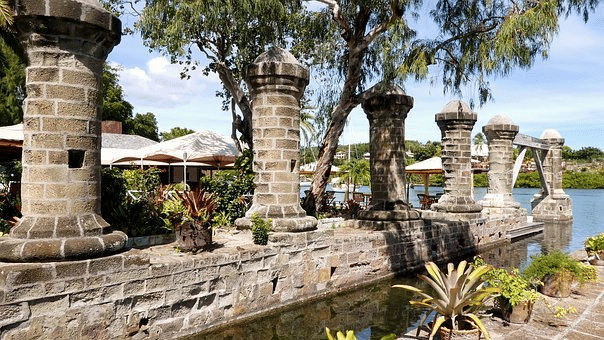
World Heritage Sites of Barbados
Historic Bridgetown and its Garrison
In the times of European settlement in the Caribbean, the capital of Barbados, Bridgetown, was a major port for the shipment of goods for the British. Bridgetown is one of the Caribbean’s earliest established towns and was used as a trading port in the 17th century. This historical World Heritage Site features colonial town buildings, the sea port and former garrison.
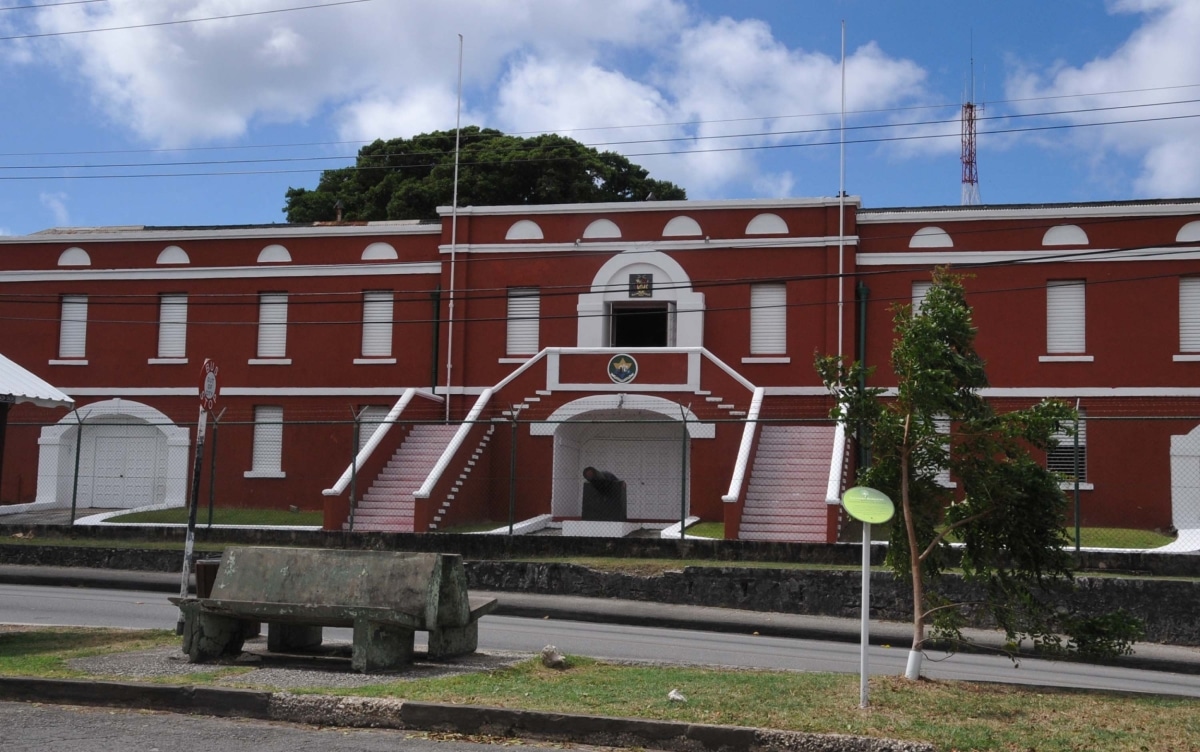
Tentative World Heritage Sites for Barbados
The Industrial Heritage of Barbados: The Story of Sugar and Rum
This Tentative World Heritage Site depicts exactly what’s in its name. The Industrial Heritage of Barbados: The Story of Sugar and Rum reflects the island’s history of slavery, agriculture and the production of Sugar and Rum in the 17th century. Barbados developed the earliest successful sugar industry in the Caribbean under the English.
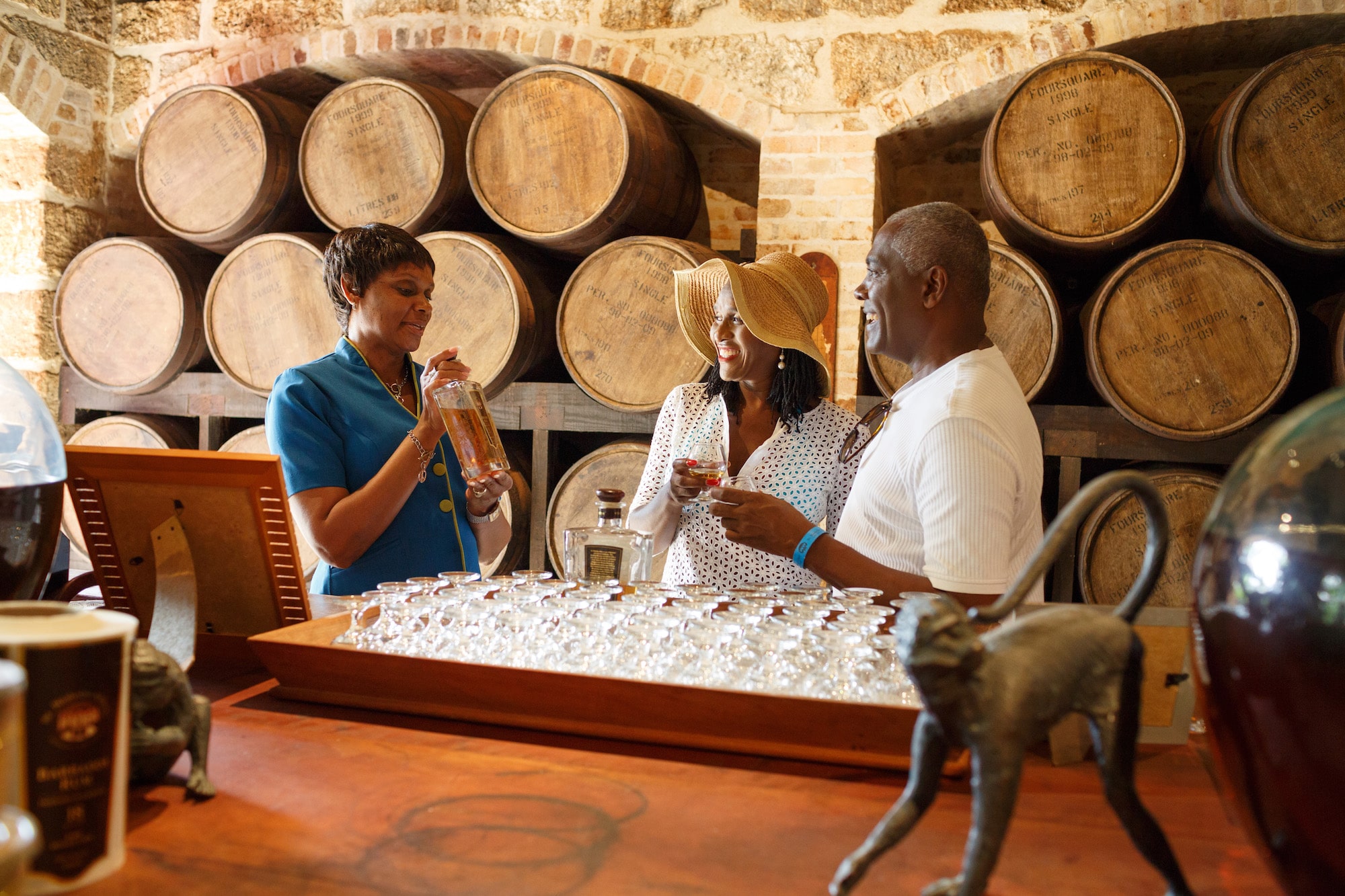
The Scotland District of Barbados
The Scotland District of Barbados is located in the parish of St. Andrew. The Scotland District, usually described as a “half-bowl” shape, is considered the only highland area on the island. The island’s highest point, Mount Hillaby, is located in the Scotland District. The Scotland District has rock formations between 30-50 million years of age, composed of clay stones, chalk and volcanic ash.
World Heritage Sites of Belize
Belize Barrier Reef Reserve System
Picture it, turquoise blue waters, coral reefs dotting the ocean floor for miles, and a wide variety of some of the most colourful fish in the world. That is the Belize Barrier Reef Reserve System.
A great hot-spot for avid divers from all over the world, the Belize Barrier Reef Reserve System is 300 kilometers in length and sits alongside the coast of Belize. The Belize Barrier Reef is the largest reef in the Northern and Western hemisphere and second in size in the world to the Great Barrier Reef in Australia.
World Heritage Sites of Dominica
Morne Trois Pitons National Park
Morne Trois Pitons National Park, a national park located in Dominica, became a world heritage site in 1997.
The park gets its name from the second tallest mountain in Dominica, Morne Trois Piton which stands at 1,387 metres high. This mountain can be seen from virtually all sides of the island.
The Morne Trois Pitons National Park features some of Dominica’s top eco-tourism hot spots including the Boiling Lake, Trafalgar Falls, a large portion of the Waitukubuli Trail (the longest hiking trail in the Western Hemisphere), Emerald Pool, and many others.
The park is home to tropical rain forests, volcanoes, rivers, waterfalls, lakes, hiking trails and houses a large colony of indigenous peoples called the Kalinago.
For these reasons and more, it is no surprise that the Morne Trois Pitons National Park made on UNESCO list of World Heritage Sites.
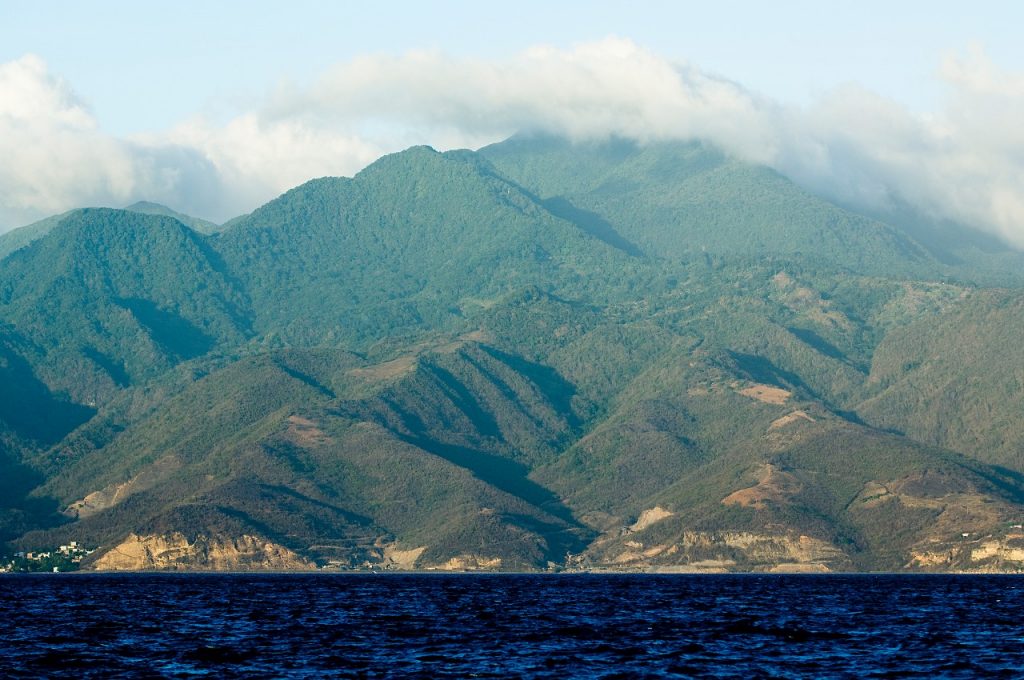
Tentative Heritage Sites for Dominica
Fort Shirley
Fort Shirley is a part of the Cabrits National Park; this fortress is most famously known for a revolt by the enslaved African soldiers in 1802, an event that led to their freedom in 1807.
The fort was used as a defense force between Britain and France in the 18th and 19th centuries.
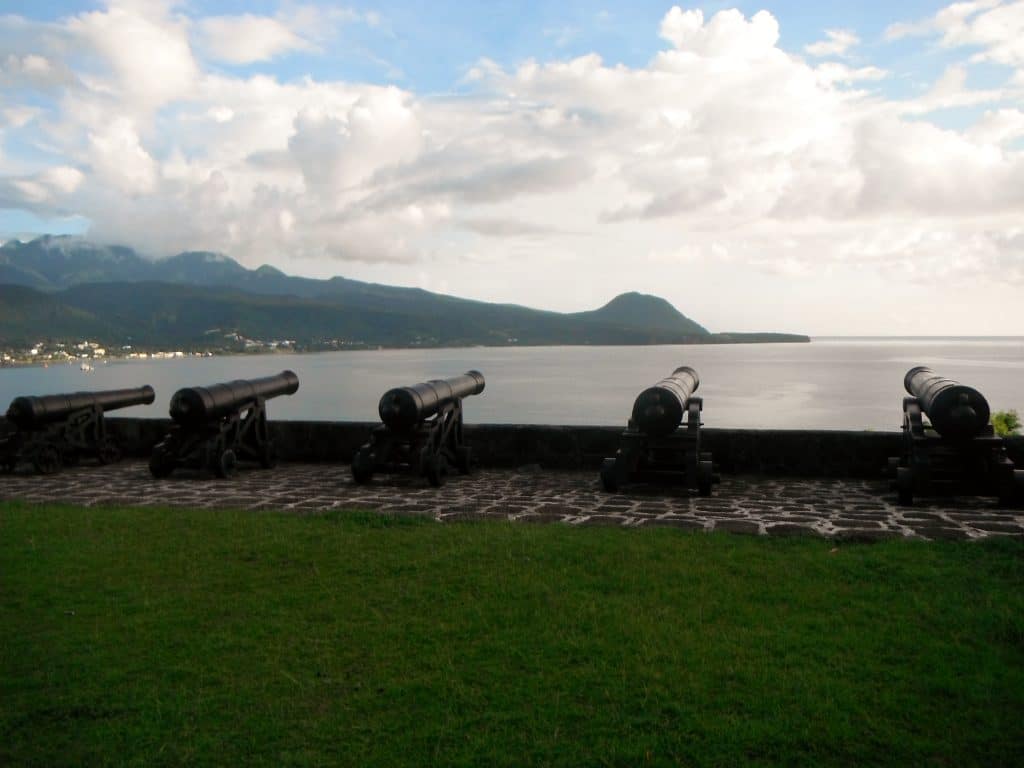
Morne Diablotin National Park
The Morne Diablotin National Park is the island’s third national park, declared in 2000, this forested area is considered a nature preserve and primarily protect the habitat of the endangered sisserou parrot, an endemic bird species that is a national symbol of Dominica.
Soufriere-Scott’s Head Marine Reserve
The Soufriere-Scott’s Head Marine Reserve (SSMR) is located on the south-western tip of the island. It encompasses the villages of Scott’s Head and Soufrière. A picturesque bay, the region is dominated by the Scott’s Head or Cachacrou Peninsula, separating the calmer Caribbean Sea from the wilder Atlantic Ocean.
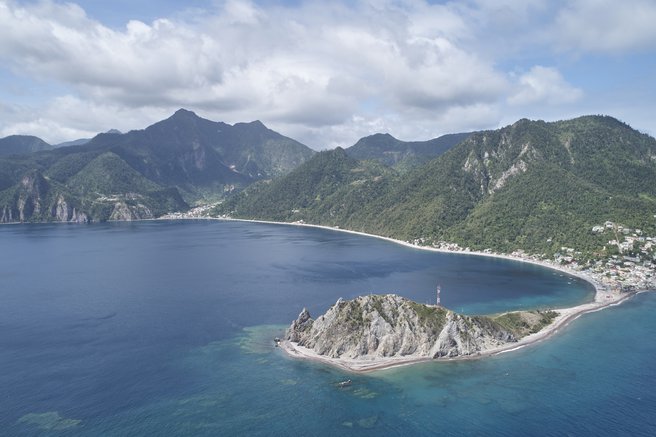
Image Courtesy of the Discover Dominica Authority
World Heritage Sites of Jamaica
Blue and John Crow Mountains

Jamaica’s only national park, Blue and John Crow Mountains is home to Jamaica’s largest point, the Blue Mountain Peak. The park is popularly known for its biodiversity and offers tours, birdwatching, camping and hiking. It is also known for its use by the Maroons, as they used this mountainous area in their resistance against British colonialism. It is considered both a natural and cultural heritage site.
Tentative Heritage Sites of Jamaica
Seville Heritage Park
Seville Heritage Park is considered to be of cultural significance in Jamaica as it represents the story of Jamaican people. The site has been occupied since prehistoric times and was occupied by the indigenous Tainos. Then occupied by the Spanish and the British, Seville represents all aspects of the process of colonization including the initial contact period, expansion of territory and the resulting goods and slave trade.
The Underwater City of Port Royal
Port Royal was once the largest city in the Caribbean and was established in the 15th century by the Spanish. It was a hotbed of pirate activity and was once called the most sinful city in the world. In 1692, Port Royal was hit with a 7.5 earthquake that sunk two-thirds of the town into the sea. The remains of this port and pirate city lie 40-feet underwater.
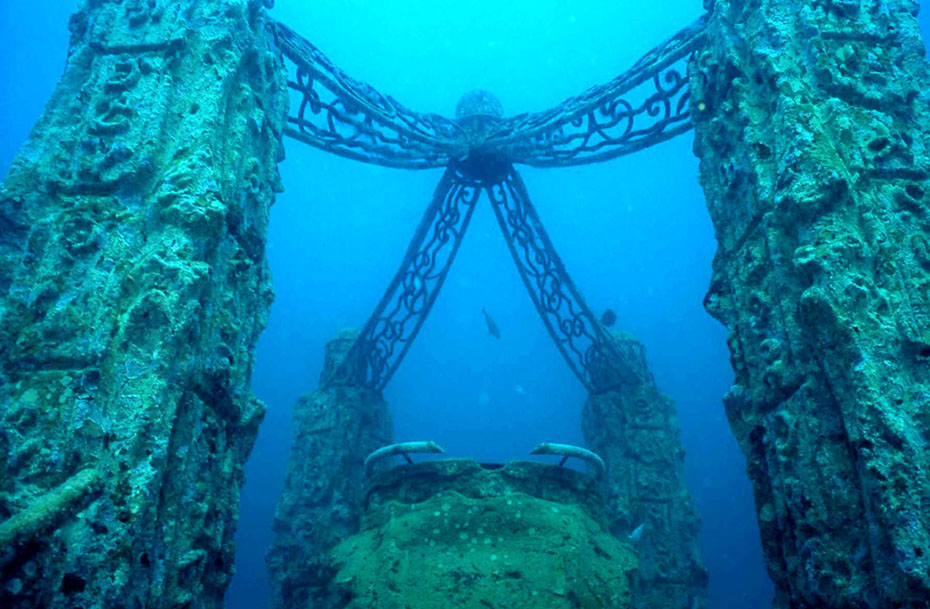
Image Courtesy Imgur
World Heritage Sites of Saint Kitts and Nevis
Brimstone Hill Fortress National Park
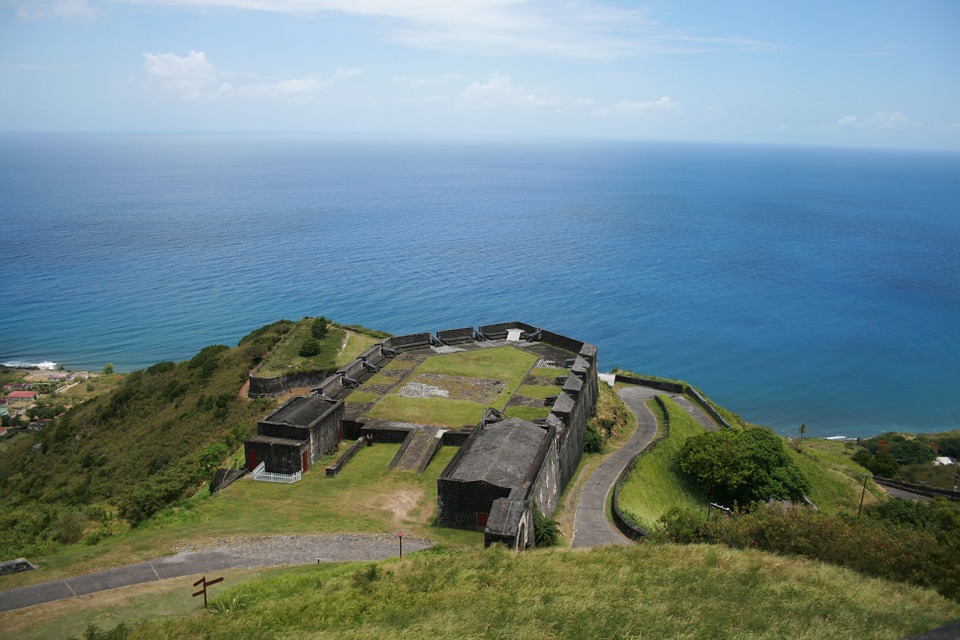
Like other heritage sites in the Caribbean, the Brimstone Hill Fortress National Park was designed and created due to the presence of the British in the Caribbean. The Brimstone Hill Fortress was built by enslaved Africans and was used as a military base for the British to protect the coastline from sea attacks.
Tentative Heritage Sites
City of Charlestown
Charlestown is the capital of Nevis. The city of Charlestown features structures and buildings from the 19th century, featuring mostly Georgian architecture developed between 1850 to 1900.
Historic zone of Basseterre
The current capital of St. Kitts, Basseterre, was the first French town in the Caribbean. Many of the buildings are of French design, while other buildings combine French and British elements. These buildings represent the colonial influences on architecture on the island.
World Heritage Sites of Saint Lucia
Pitons Management Area
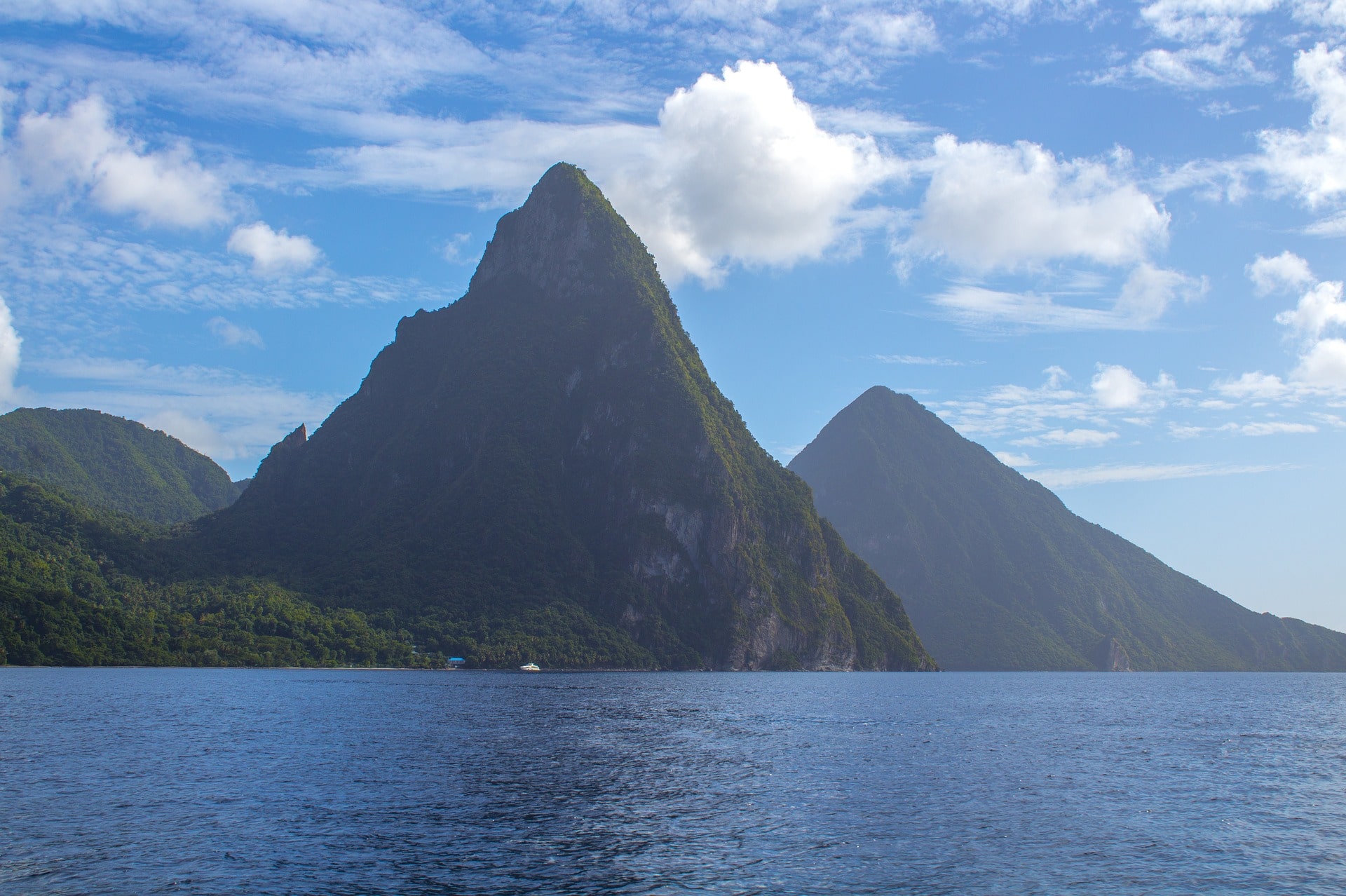
Shaped like two teeth sticking out of the sea, St. Lucia’s world heritage site consists of two volcanic spires, Gros Piton and Petit Piton. These pitons were formed hundreds of thousands of years ago during a period of intense volcanic activity.
The Pitons are home to an abundance of flora and fauna. The area is considered St. Lucia’s #1 tourist attraction. The area offers tours, hikes, zip lining, forest bathing, and repelling for tourists and locals alike.
World Heritage Sites of Suriname
Central Suriname Nature Reserve
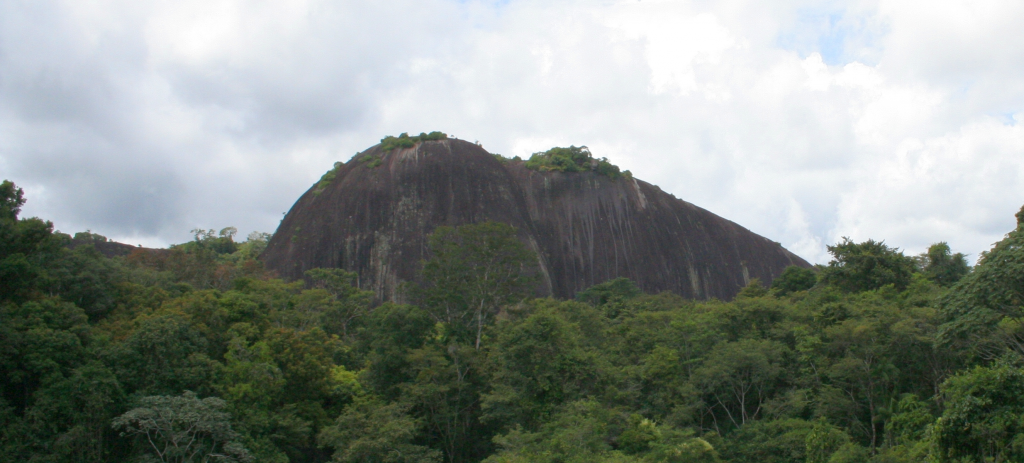
This heritage site is the largest reserve in Suriname and preserves an area of tropical rainforest. It became a World Heritage site in 2000 as it was deemed a tropical rainforest ecosystem in pristine condition.
Historic Inner City of Paramaribo

Suriname is a former Dutch colony; located in the capital of Suriname, Paramaribo, there is a former Dutch colonial town with structures from the 17th and 18th century. This heritage site displays aspects of the Dutch architecture with elements of Creole culture that reflects the diverse culture of Suriname.
Other Tentative World Heritage Sites of the Caribbean
The Bahamas
Historic Lighthouses of The Bahamas
Historic Lighthouses of The Bahamas feature a collection of eleven lighthouses constructed in the 19th century. These lighthouses were constructed as navigational guides by the Imperial Lighthouse Service, the official lighthouse service of the British Empire.
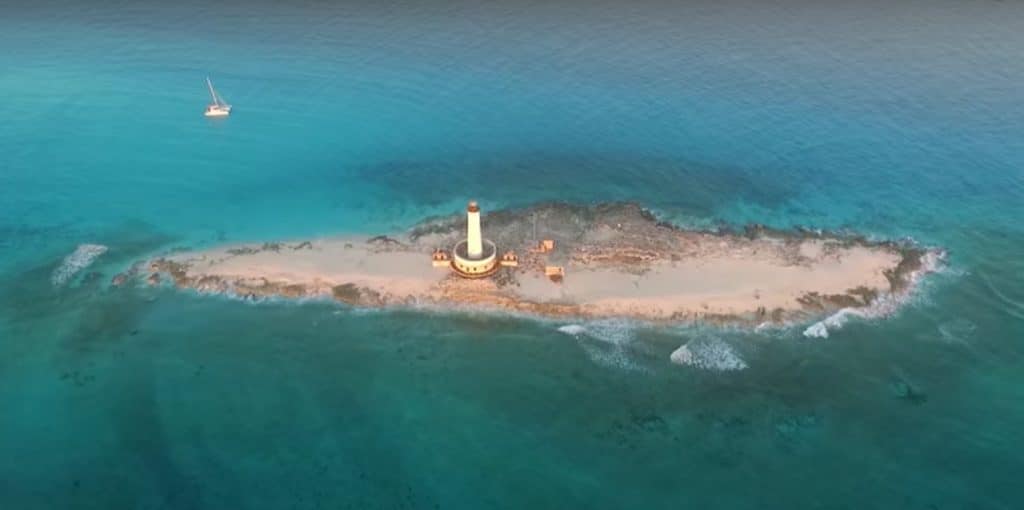
The Inagua National Park
The Inagua National Park was established in 1965 and is located on the island of Great Inagua, The Bahamas. It is internationally renowned as home to the world’s largest breeding colony of West Indian flamingos, and is home to more than 80,000 flamingos. Flamingos are the national bird of The Bahamas.
Grenada
Grenadines Island Group
The Grenadines are a chain of islands and islets located between Grenada and St. Vincent. This small chain of islands consists of 35 islands and stretches over a distance of 90 km (56 miles) from the Island of London Bridge in the south to Bequia in the north.
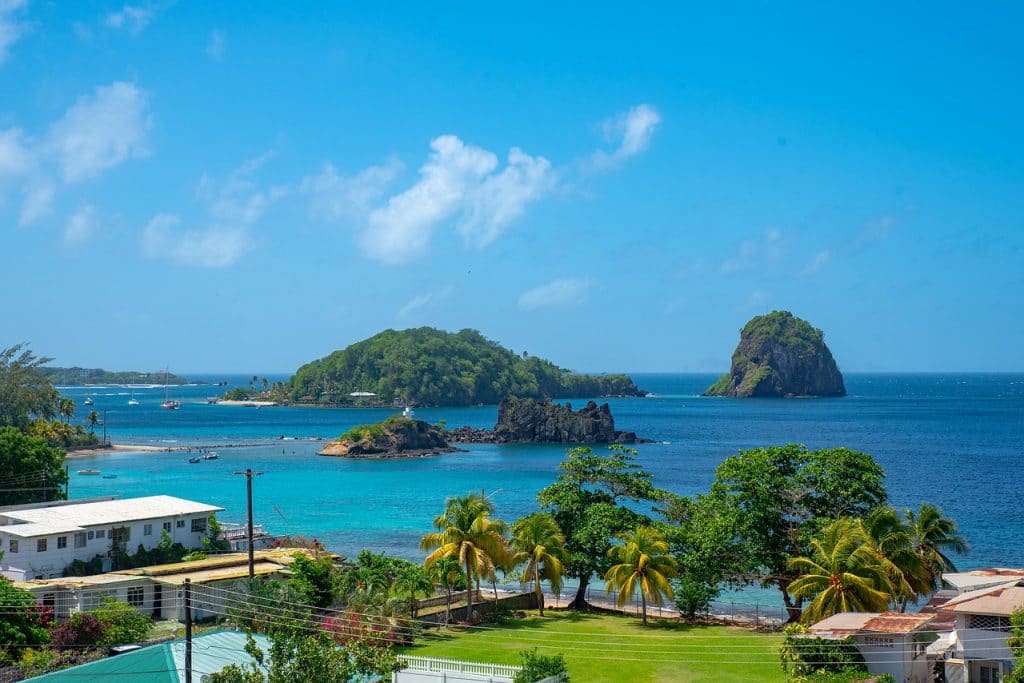
St. George Fortified System
St. George’s Fortified System was established in the early 18th century. The fortified system originally consisted of eight forts, designed to mitigate internal Amerindian attacks and uprisings of the enslaved people, as well as external European rival invasions. Only three major forts of the system have been preserved to the present day. Fort George is associated with all the periods of Grenada’s history up to its contemporary period, as the execution of Prime Minister Maurice Bishop in October 1983 was carried out at Fort George.
St. George Historic District
The urban pattern of the Historical District of St. George’s consists of a planned part and an unplanned part. The planned part of the town was laid out on a grid system with a central square and has developed predominantly over the course of the eighteenth century. The unplanned part, developed from the early nineteenth century, consists of historic buildings that are predominantly erected in wood in a vernacular Caribbean style.
Guyana
City Hall, Georgetown
Georgetown City Hall was designed and built in the 19th century. Considered one of the best examples of Gothic architecture in the Caribbean, this Gothic Revival building houses the offices of the Mayor, the City Council, and the City Engineer.
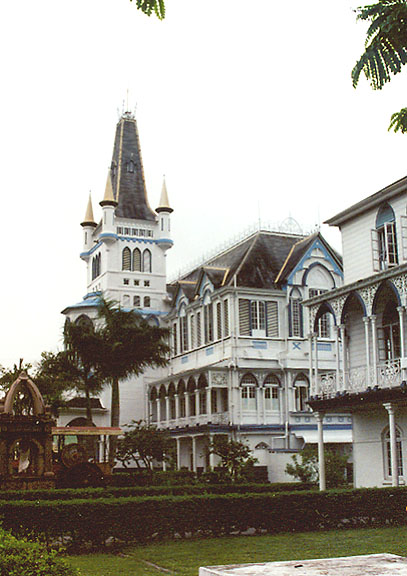
Fort Zeelandia (including Court of Policy Building)
Fort Zeelandia was established in the 18th century, built by the enslaved peoples, the Dutch West India company funded the construction to defend themselves from Amerinidan raiders and other Europeans. The Court of Policy building was also established in the 18th century and is considered one of the oldest buildings in Guyana.
Georgetown’s Plantation Structure and Historic Buildings
Georgetown’s Plantation Structure and Historic Buildings comprise of the military grounds of Kingston and Fort William Frederick, Cummings Canal, the Croal Street Canal and the Cummingsburg and Laeytown plantations. This specific area was seen as the Dutch Stabroek, which were their public buildings. Stabroek was the strip of land reserved by the Dutch for public purposes and important buildings. In these streets, the specific townscape and atmosphere of Georgetown can be found along with prime examples of 19th-century colonial architecture.
Shell Beach (Almond Beach) Essequibo Coast
Shell Beach also known as Almond Beach is located on Essequibo Coast, Guyana. Named after the presence of shells, it is also home to four species of turtles.
St. George’s Anglican Cathedral
St. George’s Anglican Cathedral is located in Georgetown, Guyana. It was built in the 18th century. It is considered one of the largest wooden church buildings in the world and is a national monument in Guyana.
St. Vincent & the Grenadines
Rock Art of St. Vincent and the Grenadines
St. Vincent and the Grenadines’ rock art is in the form of petroglyphs engraved or rubbed on isolated boulders. The rock art features both Antillean characteristics while also featuring South American characteristics.
The La Soufrière National Park
La Soufrière National Park occupies the majority of the northern quarter of the island and is the only recorded Stratovolcano in the Eastern Caribbean. Hikes are available for locals and visitors where rivers, volcanic crates and a range of biodiversity can be seen.

Trinidad & Tobago
Banwari Trace Archaeological Site
Banwari Trace Archaeological Site is the oldest pre-Columbian site in the Caribbean. This Archaeological Site provides information on the first settlers pre-Columbus and people in Trinidad.
La Brea Pitch Lake
The Pitch Lake in La Brea, Trinidad is the largest natural deposit of asphalt in the world. The lake is used locally to pitch roads and is exported internationally. Tours are available to view the pitch lake and at the lake there is the “Fountain of Youth” which allows visitors to bathe in the pools of water in between the asphalt. These Sulphur baths are good for the skin and joints.
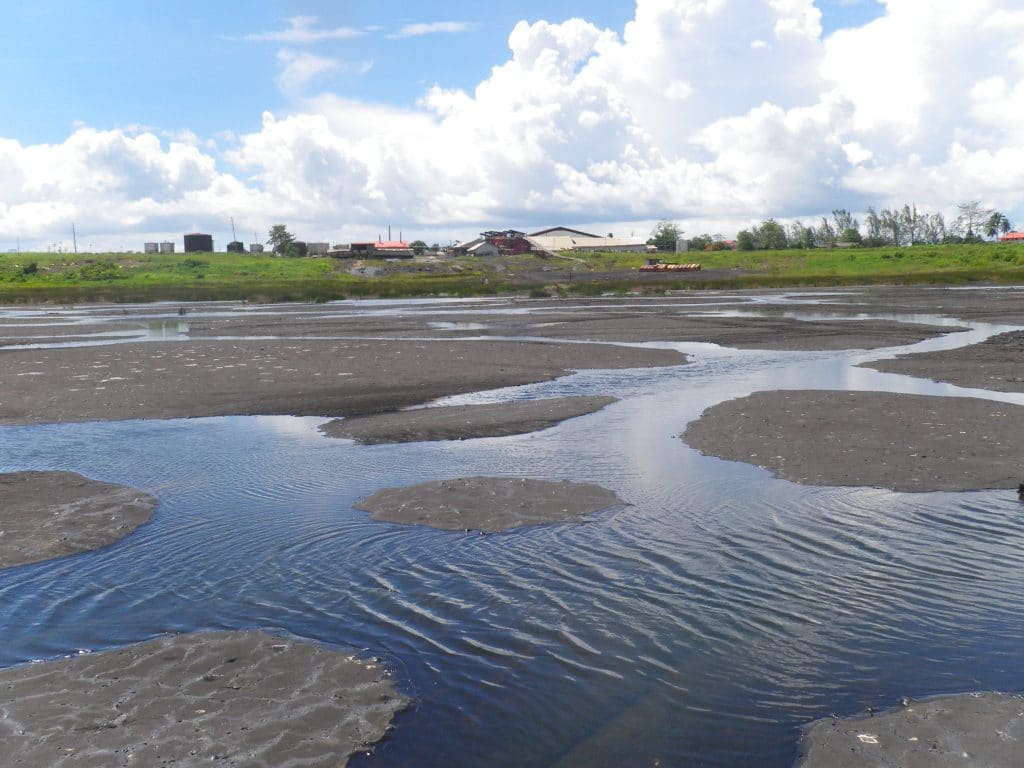
Tobago Main Ridge Forest Reserve
The Main Ridge Forest Reserve is the oldest forest reserve in the western hemisphere and was established in 1776. The Main Ridge Forest Reserve is also one of the oldest protected areas in the world and is home to various flora and fauna. This reserve is a popular area for ecotourism and birdwatching.
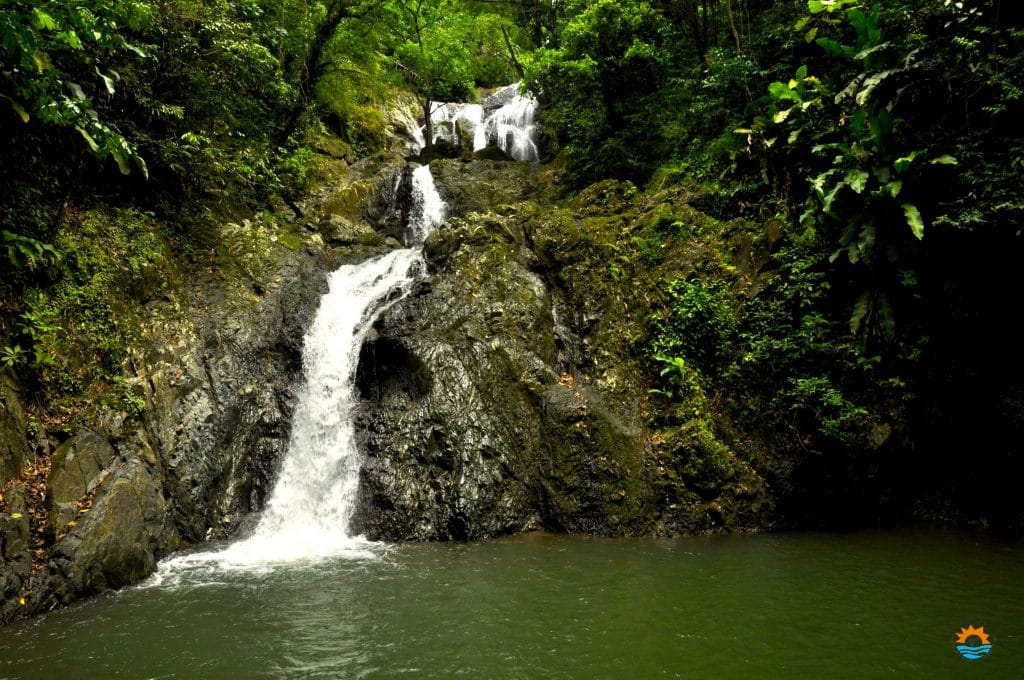
Image Courtesy the Tobago House of Assembly, Division of Tourism.
Author:
Joie-Marie Poon-Angeron

Joie-Marie Poon-Angeron is a graduate of the University of the West Indies, Trinidad and Tobago. She holds a Bachelor of Arts in Communication Studies. Joie-Marie is passionate about the arts and culture. She loves the multi-cultural dimension of the Caribbean – whether it’s music, film, art, food or fashion. She is the Social Media Engager at Leve Global and Exceptional Caribbean.




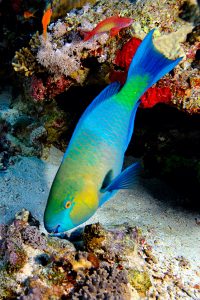
I live in the beautiful island of Trinidad and Tobago.
I mean I live in Tobago sometimes and Trinidad sometimes.
It is a very nice warm and friendly environment, it has a very diverse cultural background.
Did I forget to mention a big time cosmopolitan?
Our people will befriend you quite easily; invite you to their homes, cook and feed you, buy you drinks at the bar even if you have just met. I truly love my fellow country men. I have heard people say we are a banana republic but we are not, we are and industrial nation that has produced crude oil for years.
Of course we have our issues but who doesn’t! Trini to the bone!
Thank you for your positive feedback and for confirming that the Caribbean, including Trinidad and Tobago, is an exceptional place to live, work and play.
wow very nice and very historic